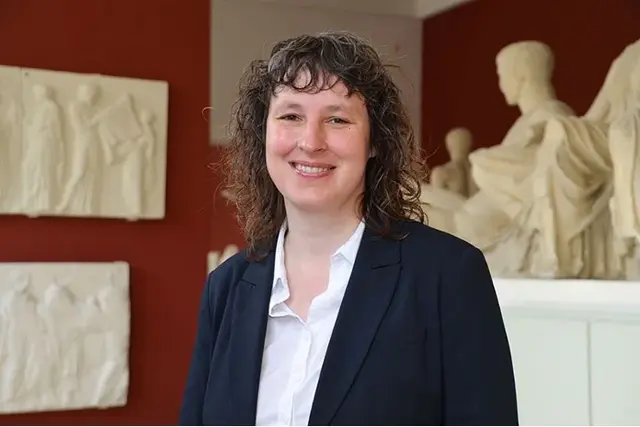Annette Haug, Dialogical Cultures Senior Fellow

Prof. Dr. Annette Haug
Institute for Classical Archeology, Christian-Albrechts-Universität Kiel, Lehrstuhlinhaberin und Leitung der Antikensammlung
“Talking with, about, and in the presence of the Gods: Graffiti in Pompeii”
The aim of the research project is to make everyday interaction with, about, and in the presence of the gods tangible by examining and contextualizing graffiti. The case study will focus on late Republican and early Imperial Pompeii (destroyed in A.D. 79) – the city with the absolute best surviving record of ancient wall graffiti. Graffiti is particularly suitable in dealing with such a research question, first for the act of writing graffiti constitutes a form of urban agency. Graffiti not only onstitutes a discourse, it is also a part of urban interaction and communication processes in and of itself. Secondly as a spontaneous and unplanned form of interaction and communication that is not officially regulated, graffiti is close to ‘everyday’ communication. Graffiti referring to religious affairs thus promise to communicate a specific attitude towards religious-ritual worlds which might contrast with literary sources, as well as the ‘official’ epigraphic record. In this way they facilitate insight into ‘everyday’ forms of action and worlds of imagination. Thirdly graffiti is related to concrete places by its physical attachment. It is thus possible to understand graffiti in relation to specific spaces (such as functional contexts), but even more concretely in its relationship to installations (such as altars), to furnishings (such as murals), and to other textual and pictorial graffiti. Ritual-religious graffiti thus gains its meaning both from, as well as in relation to a spatially-materially defined context. It also always shapes its context.
On this basis, the project chooses two interdependent approaches: It analyses ritual graffiti, as well as graffiti addressing or mentioning the gods, but also examines graffiti placed in the ‘presence’ of gods – texts written in sanctuaries or close to ritual installations such as altars. These two interlinked approaches allow for a new understanding of everyday ritual-religious concepts and actions.
The project follows my ERC Consolidator Grant DECOR (Decorative Principles in late Republican and early Imperial Italy). The new project proposed can consequently draw on extensive preliminary work, and will allow the considerations made in the ERC project to be systematically applied to this ‘dealing with the gods’.